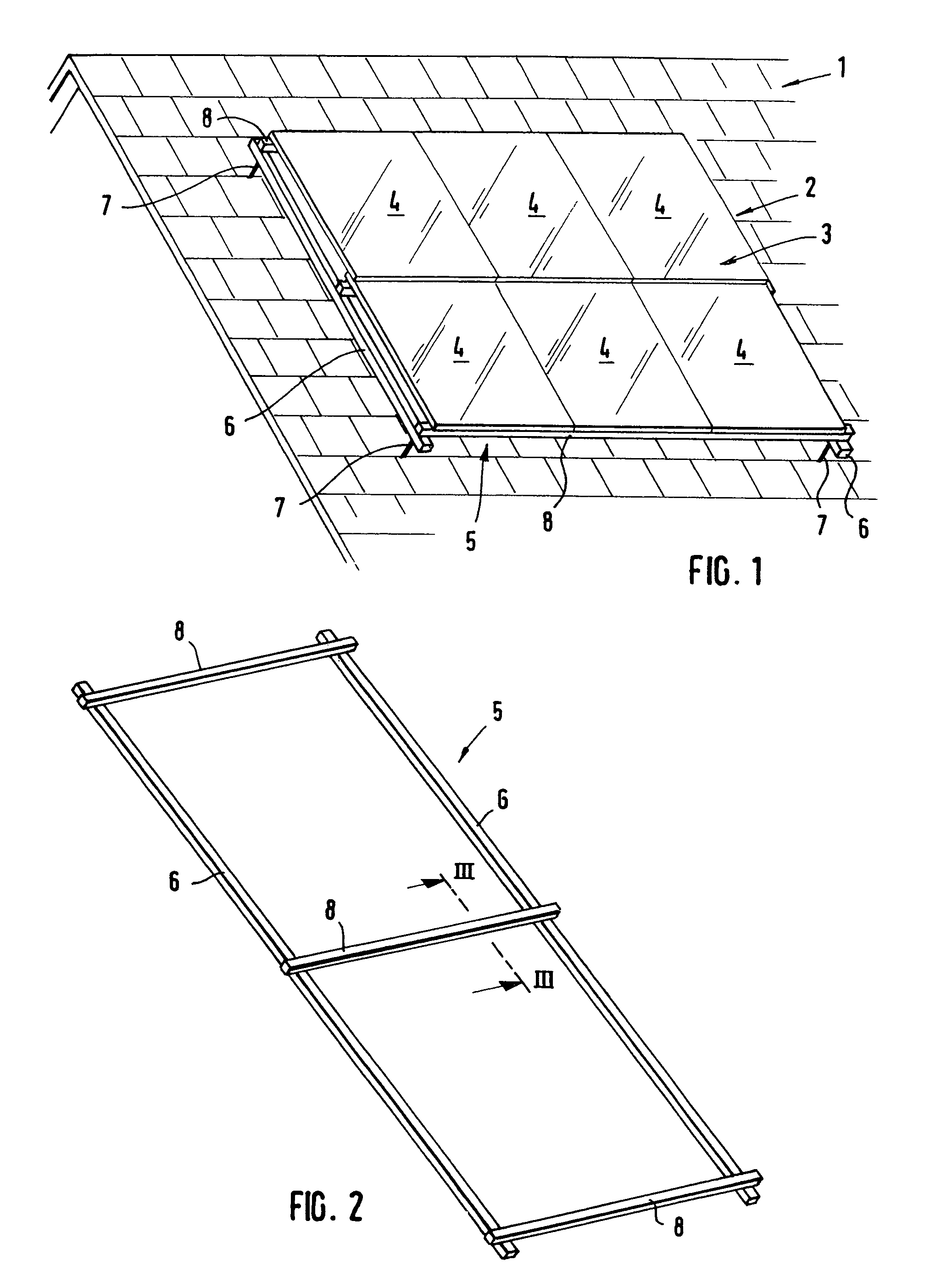Fastening device for flat components, especially solar modules, to be arranged on a framework
a technology of fixing device and flat component, which is applied in the direction of solar heat collector mounting/support, photovoltaics, solar heat collectors for particular environments, etc., can solve the problem of reducing the maximum active surface area of solar modules that can be placed on the given base surface area, and achieves simple fixation and facilitate sealing the effect of the area
- Summary
- Abstract
- Description
- Claims
- Application Information
AI Technical Summary
Benefits of technology
Problems solved by technology
Method used
Image
Examples
Embodiment Construction
[0031]FIG. 1 depicts the principle of a component group 2 arranged on a house roof 1 and including, merely as an example, six components 3, e.g., in the form of solar modules 4 including a plurality of solar cells for producing energy. Provided for retaining the solar modules 4, is a framework 5 that includes two rails 6, running vertically in this case, that are fixed to the roof via corresponding roof retaining elements 7. Two profile mounting rails 8 are arranged on the rails 6 of the framework via fastening means (not shown in greater detail). The two profile mounting rails 8 run spaced apart from, and parallel to, one another and cross the rails 6 horizontally. As will be explained in greater detail in the following, they are part of a fastening device for the solar modules 4, which are themselves fastened to the profile mounting rails 8 via suitable profile elements and retaining elements. At this point it should be noted that, of course, far more than six solar modules can be...
PUM
 Login to View More
Login to View More Abstract
Description
Claims
Application Information
 Login to View More
Login to View More - R&D
- Intellectual Property
- Life Sciences
- Materials
- Tech Scout
- Unparalleled Data Quality
- Higher Quality Content
- 60% Fewer Hallucinations
Browse by: Latest US Patents, China's latest patents, Technical Efficacy Thesaurus, Application Domain, Technology Topic, Popular Technical Reports.
© 2025 PatSnap. All rights reserved.Legal|Privacy policy|Modern Slavery Act Transparency Statement|Sitemap|About US| Contact US: help@patsnap.com



